Chest pain is a symptom that often concerns us, but the causes can be different. Recognizing what caused or is causing the condition is essential to prevent and avoid more serious complications.
A sporadic, transient and moderate pain often does not pose any risks. However, in some cases it can be related to serious cardiovascular diseases. Thus, if left untreated, it can evolve or even lead to death.
Check out what conditions can trigger this symptom and how to treat it!
In this article you will find:
- What is chest pain?
- What causes chest pain?
- What is left side chest pain?
- What can be right chest pain?
- What can be chest pain when breathing?
- What can be middle chest pain and burning?
- What are the risk groups for chest pain (chest pain)?
- Chest Pain: When Can It Be Serious?
- How is the pain of a heart attack?
- How is chest pain diagnosed?
- Treatment: what to do to relieve chest pain?
- Surgical procedures for cardiac conditions
- Medicines
- Complications
- How to prevent chest pain?
What is chest pain?
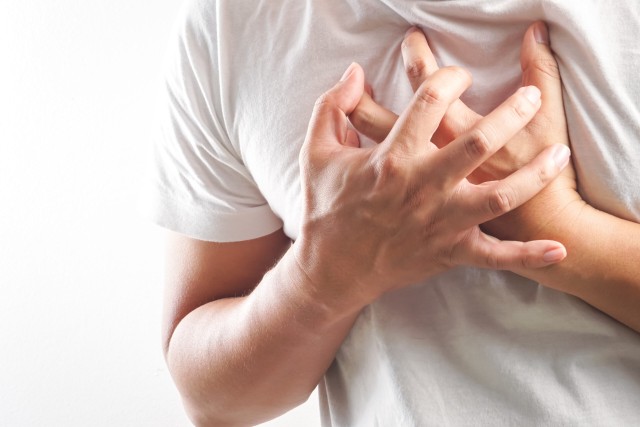
Chest pain, or chest pain, is a symptom often associated with angina or heart attack, serious cardiovascular disease. However, it can also be caused by psychiatric disorders or illnesses that affect the stomach, esophagus, lungs and rib cage (skeleton and muscles).
A study carried out in 2000 by the University of Michigan, USA, evaluated 400 patients with frequent chest pain and found that only 11% had heart problems.
The research diagnosis showed that in 53% of the volunteers no definite causes for the pain were found and in the other 36% the symptoms are caused by problems in the muscles or esophagus.
Still, non-communicable chronic diseases, such as heart disorders, correspond to 72% of deathsl, so symptoms such as tightness or discomfort in the chest should not be ignored.
The intensity of pain can range from mild discomfort to tightness, pressure, or burning in the chest. In severe cases, pain spreads to the neck, jaw, back and arms.
The most recommended is to go to the hospital when the pain lasts for more than 20 minutes or is associated with other symptoms, such as dizziness, cold sweats, difficulty breathing and headache.
What causes chest pain?
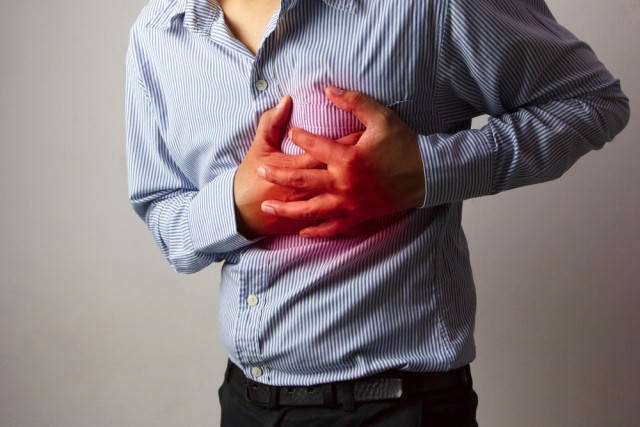
Chest pain can be caused by several diseases or changes that affect the esophagus, stomach, lungs, heart and rib cage (skeleton and muscles). Muscle pain and joint tenderness are the most common causes. But even the gases can be to blame for the discomfort!
The diseases with the greatest content of concern are cardiac, which affect the left side of the chest and can lead to death if there is not adequate assistance.
Other Causes of Severe Chest Pain
- Arthritis and rheumatoid arthritis;
- Arterial hypertension;
- Fibromyalgia;
- Aortic valve stenosis;
- Herpes Zoster;
- Myocarditis;
- Cardiomyopathy;
- Aortic alterations such as calcification of the aorta;
- Complication in veins or aortas.
What is left side chest pain?
Chest pain is not equal regardless of side. When it is stronger or only affects the left side, it can indicate some specific health conditions. Among the most common are:
Infarction
In a heart attack, chest pain is constant and spreads to the left arm, neck and jaw, for more than 20 minutes. It is usually accompanied by numbness in the limbs on the left side, nausea, sweating, difficulty breathing and vomiting.
Costochondritis
Costochondritis is an inflammation in the cartilage that connects a rib to the breastbone. Symptoms include swelling and aggravated pain when lying down, breathing deeply, or coughing. The pain that costochondritis causes in the chest is similar to a heart attack.
Angina
Angina pain is caused by the reduction of blood in the heart, altering the functioning of the organ. It is located in the center of the chest, described as a pressure, tightness, burning, discomfort, or shock sensation.
It can be stable, resulting from overexertion, and unstable, originating even in a state of rest or light physical activity. It is usually accompanied by shortness of breath, pallor, hypotension and excessive sweating.
Cardiac ischemia
Cardiac ischemia is a reduction in the passage of blood through the arteries of the heart. It is the first sign of a heart attack, causing shortness of breath, palpitations, tightness in the chest, tingling in the arms and neck on the left side.
It can cause chest pain from its chronic form, when it accumulates fat in the arteries, or transient, when it occurs in times of stress.
Cardiac arrhythmia
An inappropriate heart rhythm, which can be too fast, too slow, or irregular, is called cardiac arrhythmia. The condition poses risks of not allowing the heart to pump enough blood to supply the body, which can damage essential organs such as the brain and heart.
In addition to chest pain, cardiac arrhythmia can be associated with other symptoms, such as tiredness, weakness, dizziness, malaise, fainting, shortness of breath, paleness and cold sweat.
Arteriosclerosis
Arteriosclerosis is the thickening and loss of elasticity in the walls of arteries—vessels that carry blood and oxygen to the brain, heart, and other parts of the body.
It is a disease that causes an increase in blood pressure and is caused by the accumulation of fat and other substances inside the arteries. It is predominant in the male population over 50 years old.
What can be right chest pain?
When chest pain happens on the right side, there are other hypotheses. There are some inflammations and disorders that can cause this characteristic pain, such as gallbladder problems, pericarditis, organ inflammation, etc.
It is always worth remembering that pain can be due to several conditions, severe or not, persistent or transient. Therefore, an accurate diagnosis is always needed. Among the conditions that may be causing chest pain are:
Gallbladder Disorders
Gallstones or cholecystitis (inflammation of the gallbladder) can cause chest pain and other symptoms in parallel, such as fever, nausea, vomiting and poor appetite. The pain is usually sharp and sudden, spreading to the belly and shoulder on the right side.
Organ inflammation
The most common inflammations that cause pain in the right chest are gastritis (inflammation of the stomach), hepatitis (inflammation of the liver) and pleurisy (inflammation of the pleura, the membrane that covers the lung).
Pericarditis
Inflammation of the pericardium, the membrane that covers the heart, is called pericarditis. It starts with a sharp pain in the chest and spreads to the back. Symptoms also manifested with the disease are: dry cough, difficulty breathing, fever, fatigue and anxiety.
What can be chest pain when breathing?
Chest pain when breathing can be caused by a number of different reasons. It can be associated with muscle injuries, lung inflammation, lung disorders and even psychosomatic pain, as it is related to anxiety, stress and panic attacks.
In general, among the most associated conditions are:
Muscle injury
Chest pain when breathing can be a symptom of muscle injuries or fractures, infections and injuries to the ribs. Severe coughing can also cause pain in the area.
Thus, when breathing and requires movement of the injured area, pain occurs. However, it is not always simple to realize that it is a muscular pain.
In general, discomfort and sensitivity tend to gradually decrease if it is a minor injury or inflammation.
Pneumothorax
Presence of air between the pleura and the lung wall. undefined The person often experiences difficulty breathing and a pain that intensifies when inhaling (drawing air), which may radiate to the shoulders and surrounding area.
Lung disorders
Certain diseases that directly affect the lungs can cause pain when breathing, such as pneumonia (infection of the lungs), pulmonary embolism (lung arteries clogged with clots), and pulmonary hypertension (high pressure in the arteries of the lungs).
Lung cancer
Continuous pain that may be felt in the chest and back. Along with chest pain, it presents the following symptoms: drumstick-shaped fingers (with swollen tips), hemoptysis (excession of blood through the respiratory tract), dyspnea, cough, among others.
Anxiety, Panic Attack and Stress
Anxiety attacks, panic attacks and high doses of stress can cause chest pain, malaise, dizziness, restlessness and difficulty breathing. This type of pain is described as a tightness in the chest and can be confused with a heart attack.
What can be middle chest pain and burning?
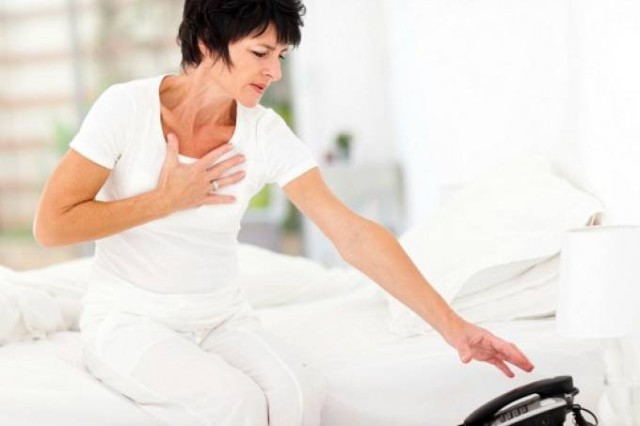
Pain in the middle of the chest may be accompanied by other symptoms. When the person feels pain and burning, the cause may be a problem related to the digestive system or excessive gas. See how these pains can be related to these conditions and when to seek medical help:
Digestive System Problems
Pain caused after long periods without eating, gastritis, esophagitis, gastroesophageal reflux or gastric ulcer may be the source of chest pain. undefined
Esophageal spasms can also occur, when some digestive problem causes the esophagus to expand and contract, which aggravates or intensifies the pain in the middle of the chest.
Gases
Excessive gas can cause sharp and intense pain, which seems to be located in the chest, usually in the central region. The person is not always able to notice the presence of gas quickly, which makes it appear that chest pain is the only symptom.
This is because flatulence causes the intestines to bloat and bloat. When gases move, the inconvenience can be even greater.
Excess gas: what can it be?
What are the risk groups for chest pain (chest pain)?
Patients over 40 years old or with a medical history of risk, such as a tendency to have high blood pressure, diabetes, angina, high cholesterol and obesity, should be monitored frequently to ensure that chest pain is not a serious problem.
Other groups that are at risk of contracting a disease that causes chest pain:
- People with chronic kidney failure;
- Smokers;
- Who has a family history of ischemic heart disease and patients with previous cases of the disease;
- Sedentary people who maintain a diet rich in saturated fats;
- Who uses drugs such as cocaine.
Chest Pain: When Can It Be Serious?
The causes of chest pain, whether on the left, right or center, can be quite variable. They do not always represent risks, although many people immediately associate them with cardiac conditions.
In general, any pain or discomfort that persists for a few days, causes great discomfort, limits activities or worsens over the days should be investigated.
However, an emergency case usually involves manifestations such as:
- If chest pain takes more than 20 minutes to relieve, especially if it is associated with other symptoms;
- If the pain gets worse with postural changes;
- If the pain spreads elsewhere.
If the affected person has any cardiovascular disease, he or she must take the medication prescribed by the cardiologist correctly and go to the hospital if the pain does not go away within 30 minutes.
Chest pain of cardiac origin
Pain caused by heart disease is usually described as tightness, pressure, or heaviness in the chest. It can radiate to other nearby areas such as the back, neck, jaw, shoulders and arms (mostly the left).
In addition, it usually becomes more intense with physical exercise or when the person makes efforts.
The pain may stop and return within minutes and other symptoms associated with chest pain of cardiac origin may arise:
- Cold or excessive sweating;
- Dizziness or weakness;
- Nausea or vomiting;
- Headache;
- Shortness of breathe;
- Tachycardia.
Chest pain of non-cardiac origin
Pain caused by non-cardiac conditions still needs treatment but is not as urgent.
They are generally pinpointed (right side, center of the chest) and do not spread to other areas. Depending on the cause, it is common that the intensity only worsens when the chest makes some movement, when breathing deeply or squeezing the painful area.
There are numerous causes of non-cardiac pain. Therefore, it is important to look for other associated symptoms that may indicate the cause or source of the symptoms. Between them:
- Sour taste in mouth or nausea;
- Difficulty in swallowing;
- Symptoms of heartburn such as a painful, burning sensation behind the breastbone.
How is the pain of a heart attack?
Infarction pain can be identified by the following characteristics:
- Pain that does not improve and does not worsen with movement;
- Remember burning or burning;
- Radiates to left arm, jaw, head or back;
- Persists for more than 10 minutes.
In cases of acute myocardial infarction, it is still possible for the person to have difficulty breathing, shortness of breath, irregular heartbeat, stomach pain and cold sweat.
In these cases, it is always recommended to go to an emergency medical center.
How is chest pain diagnosed?
The diagnosis can be made based on the analysis of the person’s clinical history, in addition to tests for a series of conditions. Symptoms and associated complaints are important for correct conduction, and it may be indicated to seek specialists or perform other more specific tests.
To eliminate the hypothesis of heart disease or to distinguish between them, the health professional may request tests, such as:
Electrocardiogram
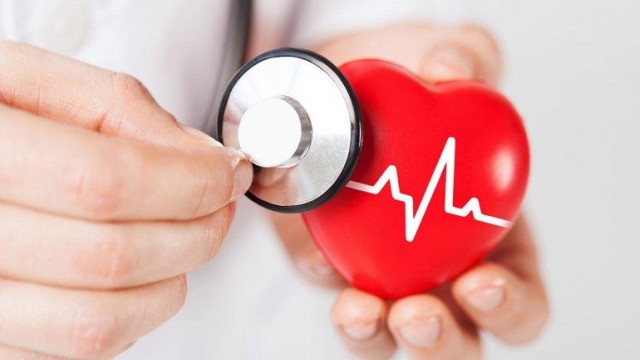
Electrocardiogram is a non-invasive and painless test used to make an electrical assessment of cardiac activity. It serves to identify possible changes in heart rhythm and the number of beats per minute, being able to detect disturbances in cardiac electrical conduction.
It is a test that is usually part of the initial investigations of chest pain.
Exercise test
The exercise test, or exercise test, is an assessment of cardiovascular functioning under physical exertion. It is usually done on a treadmill, but the intensity of the activity will depend on each patient’s condition.
The test analyzes abnormalities in the amount of blood in the heart, disturbances in the heart rhythm and pumping capacity, in addition to evaluating the chances of angina and signs of a heart attack.
Echocardiogram
An ultrasound test that assesses the heart chambers and the blood flow that passes through the heart valves. It is ideal for detecting heart dysfunctions or malformations.
Endoscopy
The test is very popular, especially among those who suffer from gastric problems such as gastritis. Despite being invasive, it is simple and without major risks.
Endoscopy may be suggested to people suffering from chest pain if it is suspected to be related to digestive tract problems.
Reflux, digestion problems and gastritis can be the source of pain.
Chest x-ray
When there are suspicions of infections or changes in the respiratory tract, such as pneumonia and pneumothorax, imaging exams can be very important to analyze the structural state of the region.
This is because damage or obstructions can cause chest pain that intensify when breathing.
Treatment: what to do to relieve chest pain?
Treatments for chest pain vary according to the medical diagnosis and can consist of medication, non-invasive procedures, surgery or even needing therapeutic intervention.
Among the most frequent treatments and counseling are:
Stress relief
It is common for chest pains to be caused by emotional conditions or psychological disorders, especially stress and anxiety. In these cases, it is necessary that the framework is evaluated by professionals in psychology and psychiatry, who will guide the best treatment.
Psychological monitoring and the use of medications that alleviate anxiety attacks may be necessary.
Antibiotics
When the pain is caused by respiratory tract infections, antibiotics may need to be used to aid recovery from the condition. Furthermore, inhalation may be recommended as well, depending on each case.
Physiotherapy
If the chest pain is of muscular origin, caused by tissue injury or inflammation, it is possible that, in addition to analgesic and anti-inflammatory drugs, physical therapy may be indicated.
Exercises, frequency and duration of treatment will be guided by professionals.
Pain Remedies
The use of analgesics and anti-inflammatory drugs may be indicated when the pain is due to trauma, injuries or efforts that caused damage to some muscle or vertebra. In these cases, the pain may radiate and appear to be occurring in the chest.
Physical exercises
The adoption of physical activities can help to improve chest pains that occur due to lack of conditioning. It is important that this is done with medical assistance and guidance from physical education specialists, so that the entire clinical picture is evaluated.
With regular exercise, blood circulation is improved and the heart is stronger. This causes that post-exercise chest tightness to gradually ease.
Antacids and Digestives
If the chest pain is caused by gastric disorders, the gastroenterologist may recommend the use of antacid medications, gastric helpers, or other treatments for disorders such as gastritis.
Food changes
If the pain is associated with gas, a dietary change can help with pain relief. Increasing fiber consumption, improving water intake, avoiding fermented foods and adopting more balanced eating habits can make a big difference in intestinal health, reducing flatulence.
Surgical procedures for cardiac conditions
When the pain is severe and the cause is severe, related to cardiac changes, the treatment of chest pain may consist of surgical procedures, such as:
Angioplasty
Less invasive surgical procedure, indicated to combat the obstruction of arteries that carry blood flow to the heart, usually caused by accumulation of fat.
A catheter with a balloon is introduced into the femoral artery, through an incision in the groin, and guided to the blocked site. The balloon is inflated to expand and open the artery diameter. The stent, a tiny tube, can be inserted to keep the artery open.
Safena Bridge Surgery
Name given to myocardial revascularization surgery, the main technique for the treatment of coronary artery disease, conditions that affect the arteries of the heart.
During the procedure, the surgeon uses a vein from another part of the body, usually the great saphenous vein (a vein in the leg), and creates an alternative route for blood to bypass the blocked arteries. The operation is also indicated for patients who suffer from ischemia, with risk of angina and heart attack.
Aortic dissection repair
In severe cases, chest pain can result from a fatal condition called aortic dissection, which is the rupture of the artery that carries blood from the heart to the rest of the body. Surgery should repair or replace the aorta as soon as possible.
Medicines
Chest pain medications vary by diagnosis. Consult a health care provider to find the cause of the pain and provide specific treatment for your condition.
For pain relief, professionals may prescribe certain medications. However, its use should not replace testing to diagnose the source of the problem. The medications usually indicated are:
- Dipyrone;
- Ares (ipratropium bromide);
If the causes are related to the heart, professionals can recommend the following medications:
- Aspirin (acetylsalicylic acid);
- Nitroglycerin, relaxes the arteries of the heart for blood to flow more easily.
Attention!
NEVER self-medicate or stop using a medication without first consulting a doctor. Only he will be able to say which medication, dosage and duration of treatment is the most suitable for your specific case. The information contained on this website is intended to provide information only, and is not intended in any way to replace the advice of a specialist or to serve as a recommendation for any type of treatment. Always follow the instructions on the package insert and, if symptoms persist, seek medical or pharmaceutical advice.
Complications
Complications of chest pain are quite variable and obviously depend on the cause of the problem.
Conditions that are related to heart problems have greater risk of complications, which can result in heart attack and death. However, most chest pain is due to other conditions, such as stress and injuries.
Despite requiring treatment, these conditions tend not to have severe complications, as soon as the aggravation is slower and more gradual.
How to prevent chest pain?
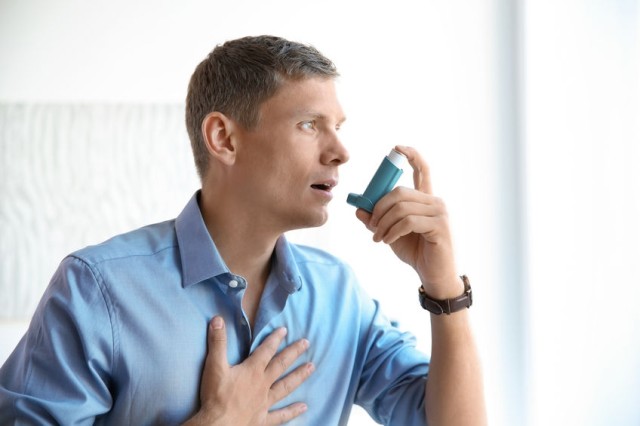
There is no specific prevention, as chest pain can have several causes. However, some care and attitudes help to avoid pain, they are:
- Avoid stressful or anxious situations;
- Adopt a more relaxed lifestyle, with frequent physical exercise and a balanced diet;
- Avoid cigarettes and drug use;
- Reduce caffeine;
- Stretch;
- Keep exams and clinical appointments up to date.
Chest pain can be associated with non-fatal and easy-to-treat diseases, however, attention should be paid when it becomes persistent or recurrent. To avoid further complications, this article seeks to inform about the causes of chest pain and the importance of paying attention to its symptoms.







